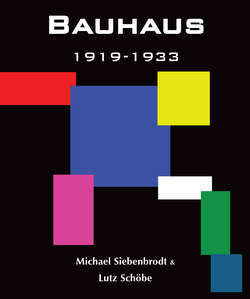Читать книгу Bauhaus. 1919-1933 - Michael Siebenbrodt - Страница 7
На сайте Литреса книга снята с продажи.
History of the Bauhaus
Forerunners, Roots and History
De Stijl, Blauer Reiter (Blue Rider) and Der Sturm
ОглавлениеThe Dutch artists’ group De Stijl, founded in 1917 with constructivist design principles that were propagated in Weimar by painter Theo van Doesburg (1881–1931), immediately influenced the artistic development of the Bauhaus. The Bauhaus’s study of technology and industry was accelerated by De Stijl, and Gropius’s and other Bauhaus artists’ use of forms was in part aligned with the group for a sustained period of time. In the area of visual arts, the most important artists for the Bauhaus were those whose work was grouped around the Blauer Reiter and the magazine and gallery Der Sturm, founded by musician and art critic Herwarth Walden (1878–1941). These included the painters Paul Klee (1879–1940) and Wassily Kandinsky (1866–1944), who were later appointed Masters at the Bauhaus. These painters’ specialities lay in the great sensitivity and vividness with which they reacted to the changing society and profound transformation of the scientific view of the world. Design methods considered appropriate responses to the contradictions of the time usually involved the rejection of the outdated concept of faultless rendering as well as a focus on abstraction and expression, cubism and futurism. An in-depth analysis of the artistic means of design as well as an exploration of their innate laws assisted in the search for a new intellectuality by means of cognitive progress on the basis of an enlightened rationality.
Politically, the Bauhaus developed after and in reaction to the 1917 October Revolution in Russia, the 1918 November Revolution in Germany and the end of World War I. The situation after the war and the radical political changes were general premises for the intended renewal of art and architecture. It is evident from Gropius’s programmatic texts that the Bauhaus founder was clearly aware of this connection and that he himself, as many of his contemporaries and later comrades-in-arms, wanted to make a contribution to the creation of a new, democratic society. For Gropius, World War I was more than just a lost war. For him, his world had ended and in 1918, he was looking for radical solutions to the problems of his time. In the end, he was credited with making an attempt in his thinking to unify some of the most important cultural influences, impulses and trends of the past and present and to develop an image of the new world in synthesis. The Bauhaus was solidly anchored to this concept.
